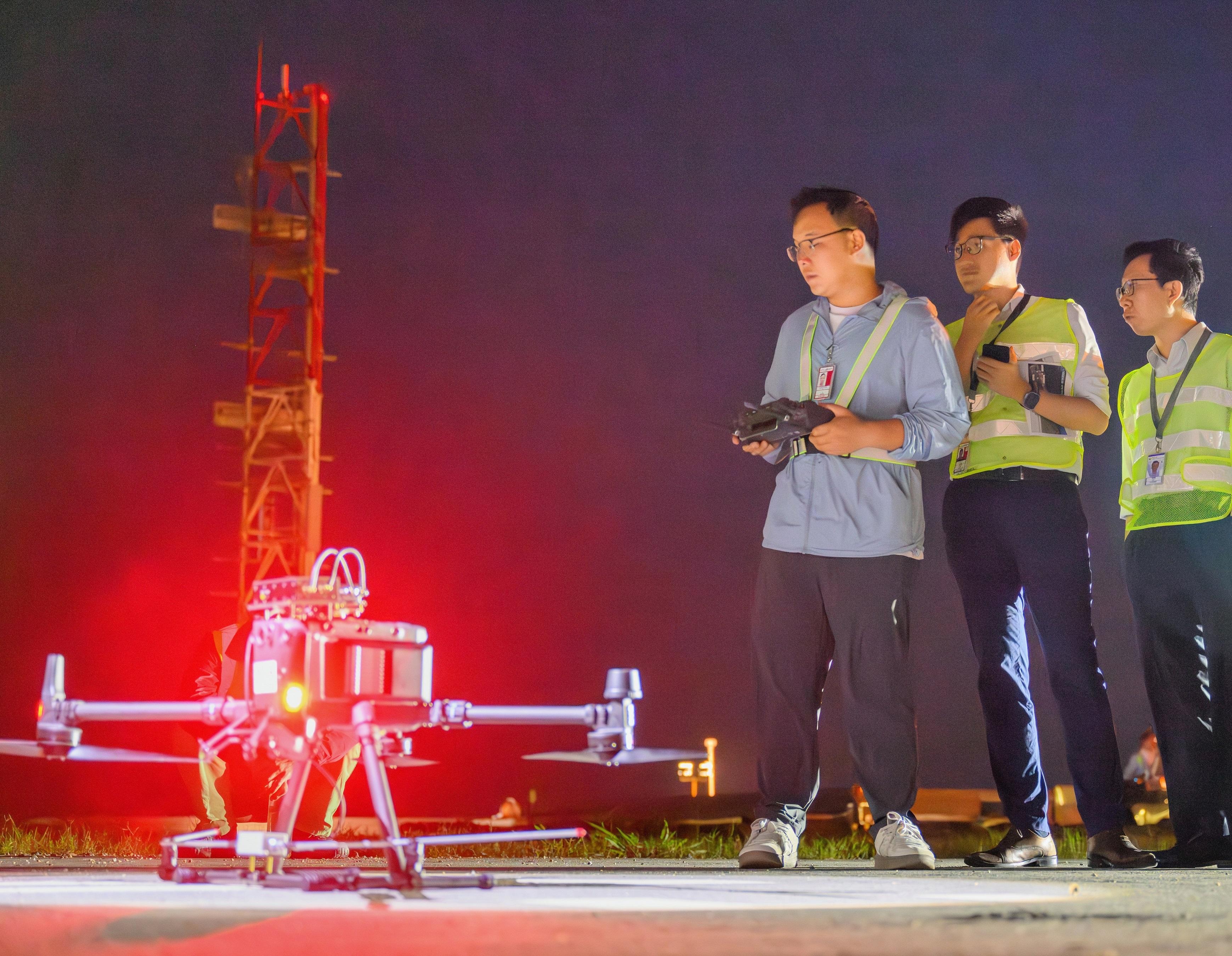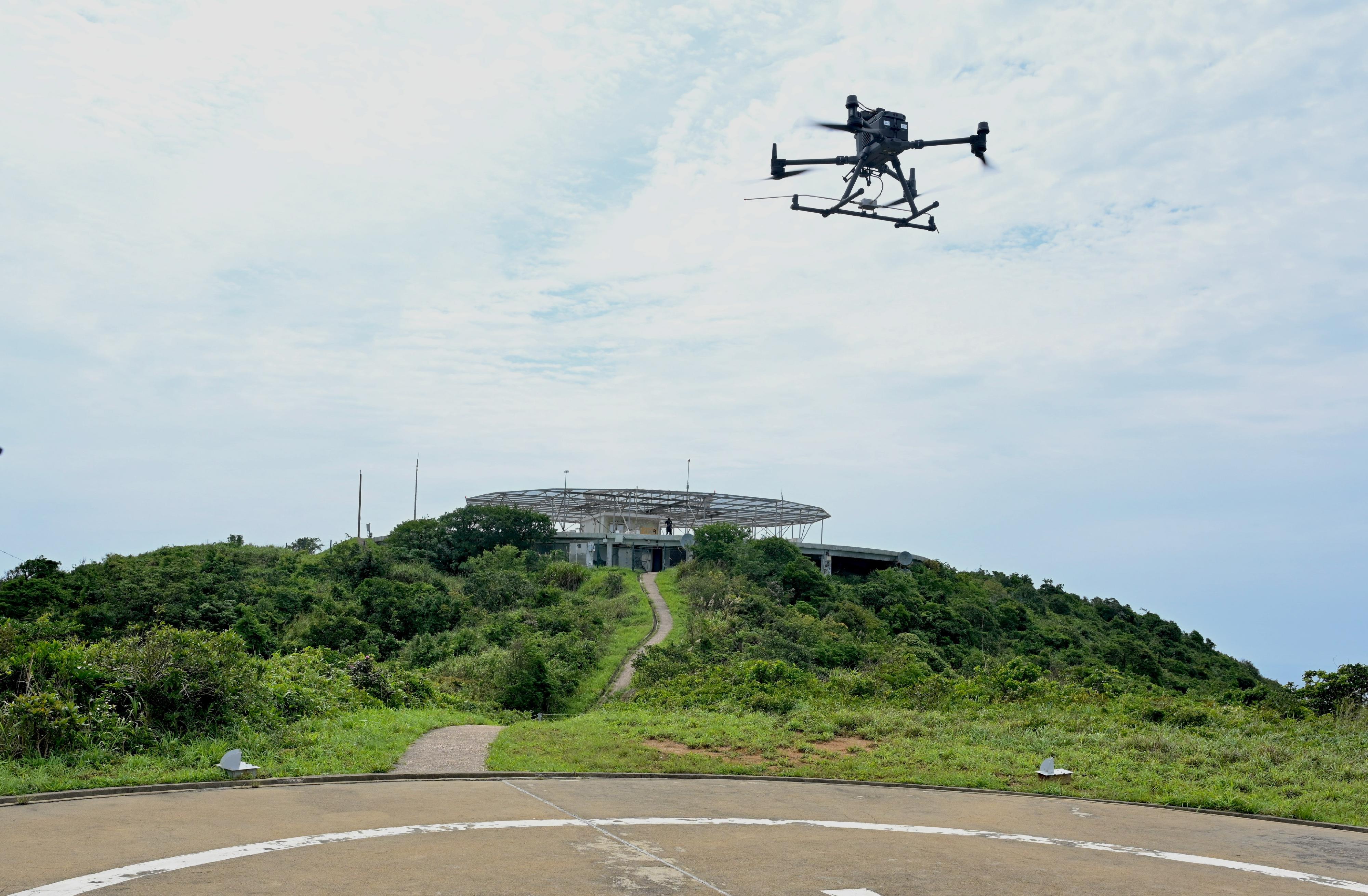The Civil Aviation Department (CAD) conducted the second phase of a trial flight inspection by small unmanned aircraft (SUA) on May 9, 10 and 13.
According to the standards of the International Civil Aviation Organization (ICAO), regular flight inspections on ground navigational aids, such as the Instrument Landing System (ILS), are mandatory to ensure related operations are in compliance with ICAO requirements. The flight inspections for Hong Kong International Airport (HKIA) have been conducted with results certified by the internationally recognised flight inspection aircraft and professional crew from the Flight Inspection Center (FIC) of the Civil Aviation Administration of China (CAAC). To enhance efficiency in flight inspections, the first phase of trial flight inspection by SUA, spearheaded by the CAD, was conducted successfully last August to testify to the feasibility of using SUA to carry out part of the flight inspection on the ILS and Airfield Ground Lighting at HKIA.
Upon the successful completion of the first phase of the trial, the CAD conducted the second phase of the trial over the past few days. In addition to conducting more flight inspections by SUA on the ILS of the northern runway at HKIA, part of the flight inspection was also conducted by SUA on the Doppler Very High Frequency Omnidirectional Radio Range and Distance Measuring Equipment (DVOR/DME) located on Tung Lung Island. This equipment provides bearing and distance information to assist aircraft in navigating along flight routes. The trial confirmed that carrying out part of the flight inspection by SUA on navigation equipment at remote outstations offers greater flexibility in flight manipulation, more efficiency in deployment and can achieve zero carbon emissions as compared to traditional flight inspection aircraft. Most importantly, the inspection results also align with those obtained from traditional flight inspection aircraft.
Drawing on the successful experience of the two trials, the CAD will continue to collaborate with the CAAC FIC and relevant stakeholders to conduct further studies on the utilisation of SUA to carry out part of the flight inspection. The CAD will also monitor closely the development of relevant ICAO standards and guidelines to leverage the benefits of SUA in conducting flight inspections with greater efficiency and flexibility.
Follow this news feed: East Asia







